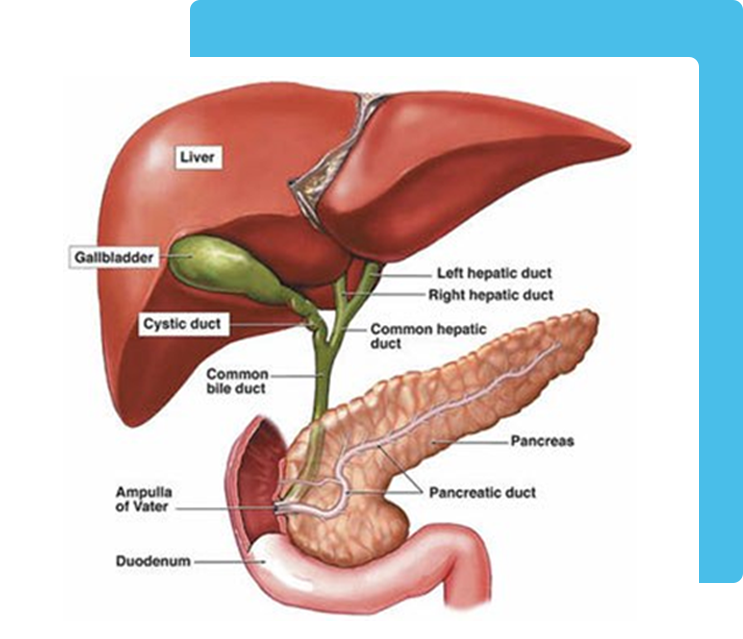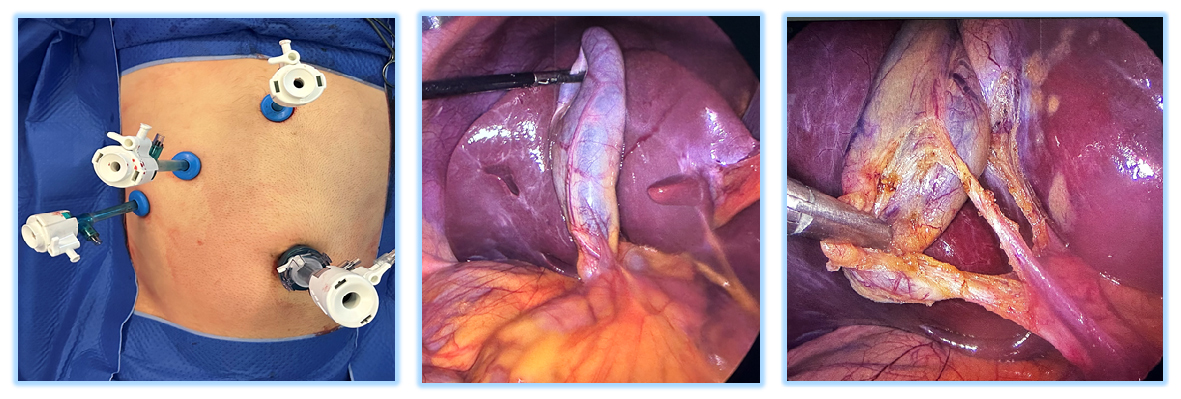
- Appointments
- Sunnybank 07 3344 1440
- Mater Health Hub 07 3041 5082
The gallbladder is a pear-shaped organ, located in right upper part of abdomen and connected with the common hepatic duct arising from the liver. The gallbladder stores and concentrates bile which is produced by the liver and helps in digestion of fats and certain waste products by releasing the bile into the common hepatic duct. Bile is a yellow-green liquid, composed of water, lecithin, cholesterol, bile salts, and bilirubin.

Gallstones are hardened deposits of bile. They develop due to improper ration in the bile of cholesterol, bile salts or bilirubin. They are mostly made up of cholesterol. Gallstones can vary in size and number and may or may not cause symptoms.

There is no universal cause for gallstones however there are some factors that increases the risk of developing gallstones. These include:
Gall stones are common condition, present in up to 10 -25 % of population. Most, up to 90 % are asymptomatic and not require any intervention. The remaining 10 % have symptomatic gall stones requiring treatment.
The gall stones result in blockage of outlet duct called cystic duct resulting in distension, inflammation (biliary colic) or infection of gall bladder (Cholecystitis). This presents as severe pain in the upper abdomen. This can be associated with abdominal bloating/belching, back pain near shoulder blades, nausea, vomiting and fever. A complicated gallstone problem can cause jaundice or pancreatitis.
Gallstones and cholecystitis (inflammation of the gallbladder) can be easily diagnosed through ultrasound. Other advanced techniques or tests include endoscopic ultrasonography, cholescintigraphy (HIDA) scan, CT scan, MRI and may be required in complex gallstone conditions
Gallbladder surgery is considered the best option for gallstone treatment. Most people can live a normal life without their gallbladder.
The surgery to remove the gallbladder is called a cholecystectomy and is, usually performed through laparoscopic techniques which are minimally invasive as compared to open abdominal surgery which requires a long incision. Laparoscopic procedure for removal of the gall bladder typically involves four small cuts. An intraoperative cholangiogram (x-ray test) is performed during surgery to check for stones within the bile ducts and if present may be amendable to removal by common bile duct exploration. The key hole procedure is a safe procedure, but like all operations, there are risks and complications associated with the procedure like bleeding, infection, injury to the bile duct, bile leak and damage to bowel and blood vessels.
In condition where gall stone has migrated to common bile duct, they require additional procedure to explore bile duct (CBD exploration) at the time of cholecystectomy or require endoscopic treatment (ERCP) before or after cholecystectomy. The procedure is performed as an overnight stay and patients can be discharged the next day. Most patients need simple analgesia to control pain after discharge. They are advised to avoid heavy weight lifting for 3-4 weeks.

All Copyrights © 2023 Dr. Kaushik Kumar
Powered by :: Growup Business Solution